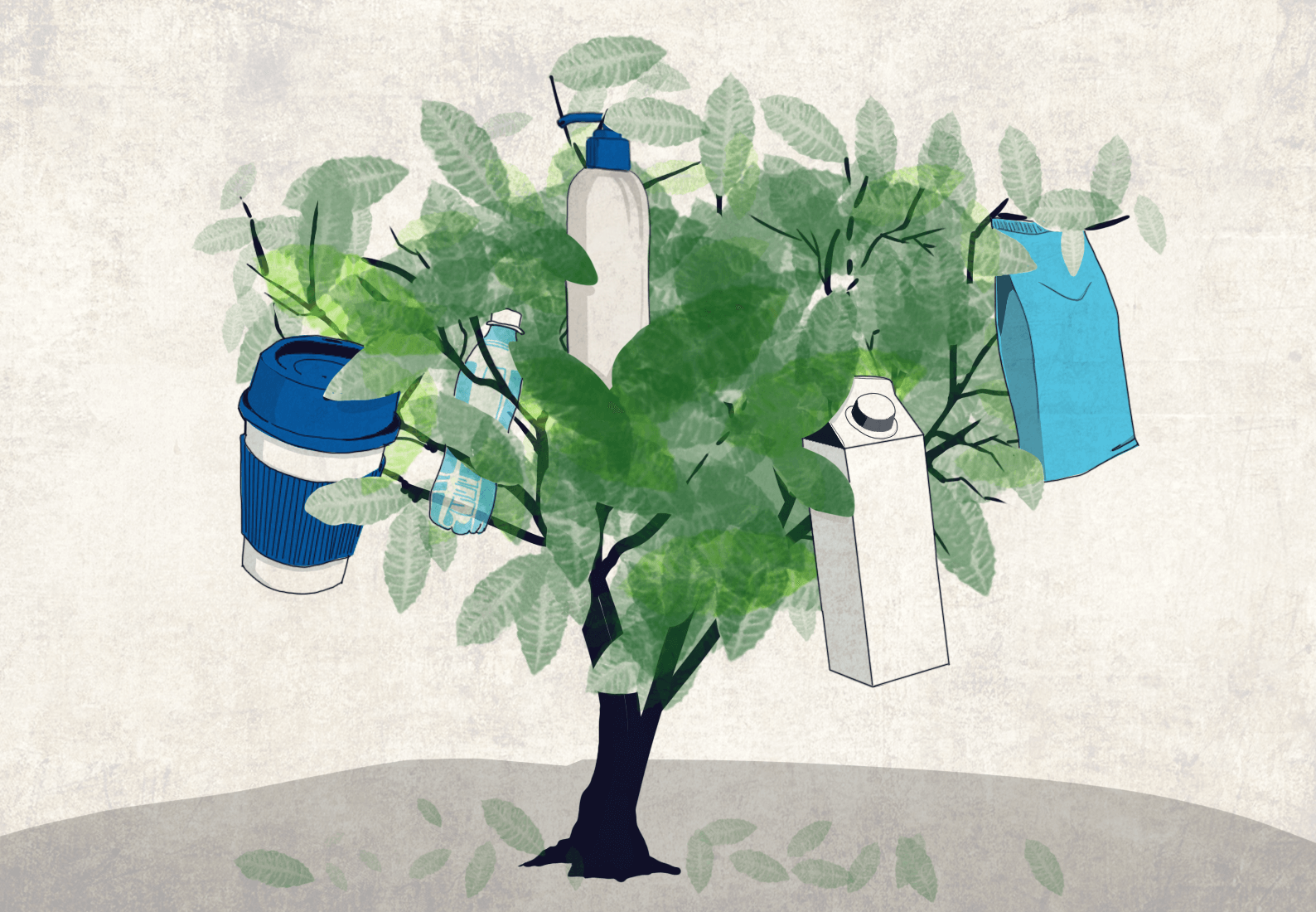Each year, an estimated 330 million metric tonnes of plastic are produced globally. A significant portion of that plastic becomes waste, clogging landfills, rivers, and the ocean for centuries, damaging ecosystems and negatively impacting human health. Nearly 40 percent of all plastics derived from fossil fuels globally are used for packaging, including single-use food packaging. With worldwide demand for food projected to double by 2050, food packaging innovations are paramount to achieving a truly sustainable food system.
The ideal sustainable food packaging material would maintain key functional properties without contributing to environmental waste, But replacing petroleum-based packaging has proven to be a major challenge. For example, polylactic acid (PLA) is a popular candidate as it degrades in soil over the course of 3-5 years. However, PLA persists in waterways for a similar timeframe as high-density polyethylene, highlighting the need for more research on alternative materials.
Computer simulations can capture the behavior of real material systems and accurately predict bulk properties.
My team at Schrӧdinger is focused on developing computational tools to address this very problem. As product manager for the consumer goods division, I help companies innovate their food and beverage packaging design and rationalize existing packaging product behavior. Schrӧdinger’s physics-based platform for molecular design can generate massive quantities of meaningful simulated data. This opens new frontiers of chemical discovery for sustainable materials design.
Atomistic and molecular simulations look at the connections between atoms and molecules, and how those connections affect final product properties of interest. Computer simulations can capture the behavior of real material systems and accurately predict bulk properties. One of the key advantages of molecular modeling, particularly in the area of packaging design, is that only knowledge of the chemistry is necessary to build and simulate models, as the physics of these systems remain constant.
Developing new packaging is a multiparameter design process. We must consider consumer trends, labeling, and traceability, in addition to performance properties of the packaging, which need to be optimized to match or exceed existing solutions. Physical and chemical properties are tractable with molecular modeling methods, and the compatibility of product and packaging can be modeled in several ways. For example, barrier properties can be evaluated by simulating the interface between a product (or its important components) and the barrier material. These simulations not only mimic the interface, but also show how products behave at that interface. If stability is a concern, it can be explored to determine if self-organization or phase separation occurs at the interface.
Simulation will not replace experiments, but can reduce cost and time spent by triaging bad candidates and allowing researchers to focus on those with a higher probability of success.
Thermomechanical properties are another key feature of food packaging materials. The ability to predict these properties while also considering exposure to different environmental conditions, such as temperature and moisture exposure, is essential. My team recently explored this problem in a paper describing prediction of thermomechanical properties of amorphous starch. Starch is a renewable feedstock that is readily biodegradable, easily modified physically and chemically, and is inexpensive to cultivate. Using molecular simulations of amylose, a major component of starch, we demonstrated the ability to mimic processing conditions and their effects on thermophysical properties of the resulting material. Beyond prediction of the plasticization effects of water, we also measured moisture diffusion and provided temperature-dependent kinetic models for water, which agreed quantitatively with the experiment. We accomplished this without the use of expensive high-resolution materials characterization experiments, which can’t provide a molecular picture like simulation approaches do.
While thermoplastic starch (TPS) has been successfully applied in commercial products, including biodegradable packaging and disposable eating utensils, it has poor stability when exposed to moisture, resulting in depressed mechanical properties. TPS properties can be improved significantly by blending with other polymers, fillers, and fibers. However, mixtures of PLA, polypropylene, and other natural fibers that are often used in food packaging do not provide high mechanical strength. Understanding the morphology, compatibility, and thermomechanical properties of biopolymer blends—and the potential deleterious effects of moisture exposure—is necessary for development of innovative new products that meet requirements for shelf-life and applicability for a specific food or beverage product.
My team is currently exploring mixtures of PLA and biopolymers like chitin and chitosan by screening their material properties. This allows for selection based on a particular food product, and provides a nanoscale picture of how each candidate material will interact with its surroundings and the product itself. Many of our current customers are adopting a similar approach with packaging materials, whether recycled or biobased. Understanding how different properties will be affected is critical when changing raw materials or introducing new packaging materials to new or existing products.
Simulation will not replace experiments, but can reduce cost and time spent by triaging bad candidates and allowing researchers to focus on those with a higher probability of success based on simulation results. Sustainable food packaging alone will not solve our global food system challenges, but it can be part of the solution.
Reprinted from INFORM, copyright © 2022 by the American Oil Chemists’ Society. This article was first published on October 1, 2022 and appeared in Vol.33, Issue 9. pp. 12–16.










